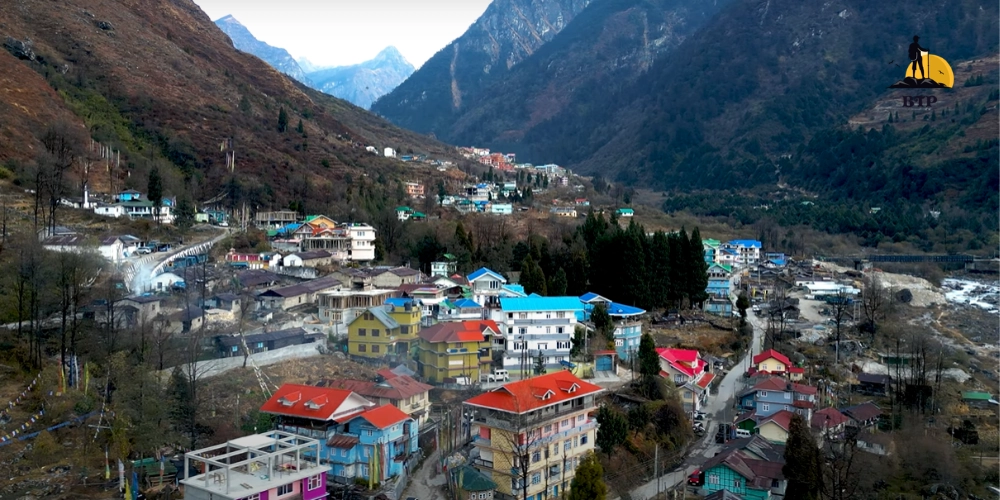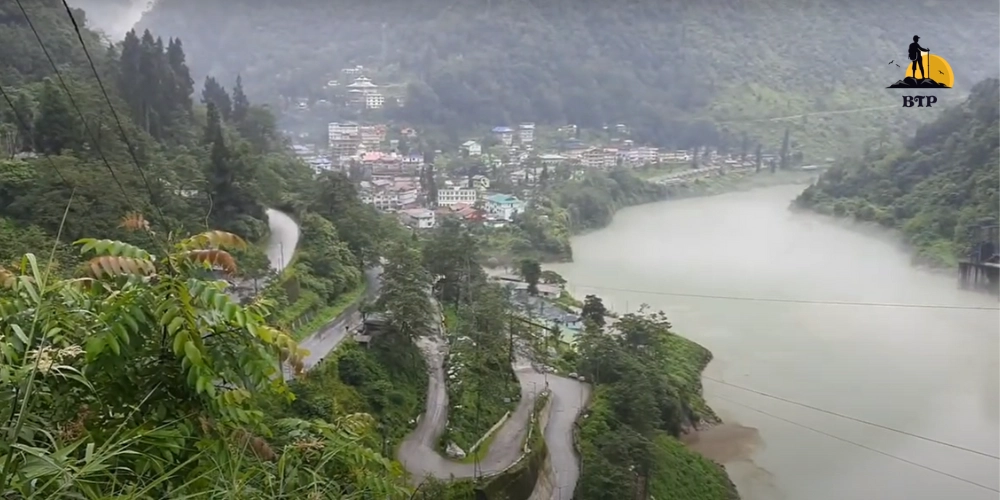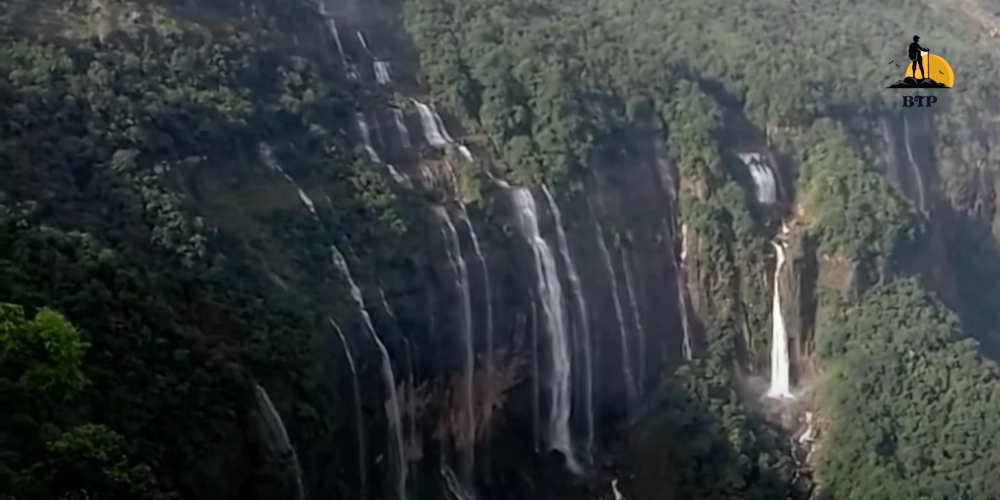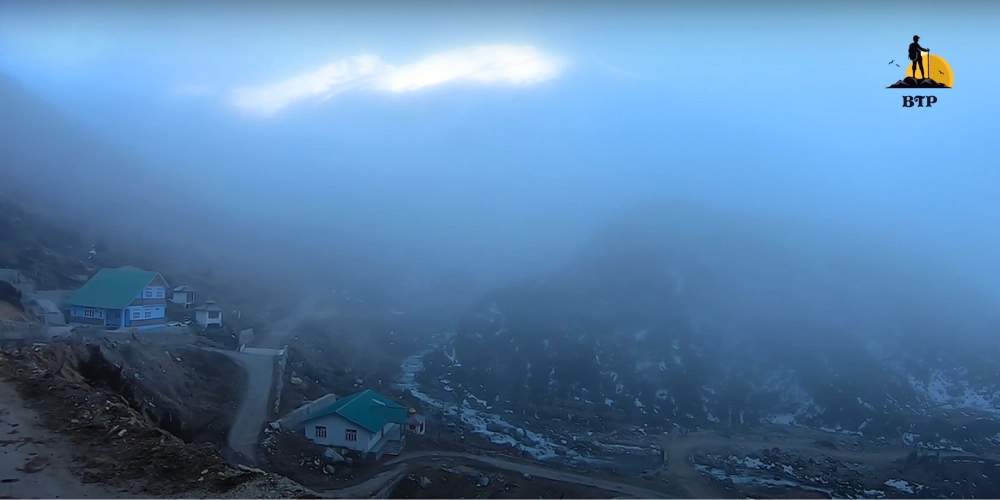Sikkim, a state in northeastern India, contains the small town of Lachung, which is situated at an altitude of roughly 9,600 feet (2,900 meters) above sea level. It is a well-liked vacation spot known for its breathtaking natural splendor, snow-capped mountains, gushing waterfalls, and attractive valleys.
Lachung is found in the North Sikkim region, some 118 kilometers from Gangtok, the state capital. The settlement is located close to the intersection of the Lachung Chu and Lachen Chu rivers and is enclosed by the magnificent Himalayan mountain range. Rhododendrons, primulas, and musk deer are just a few of the diverse plants and animals that can be found in the region due to their high biodiversity.
Although visitors come to Lachung all year round, the best months to go are between June and October due to the pleasant and nice weather. The community provides tourists with a variety of activities, such as hiking, mountain biking, river rafting, and touring. The Yumthang Valley, Shingba Rhododendron Sanctuary, and the Lachung Monastery are a few of the well-known sights in and near Lachung.
Here are some of the attractive places to visit in Lachung Sikkim:
Yumthang Valley
A beautiful valley in the North Sikkim region of the Indian state of Sikkim is called Yumthang Valley, which is also referred to as the Valley of Flowers. The valley is surrounded by snow-capped mountains, forests, and hot springs and is located at an altitude of roughly 11,800 feet (3,600 meters) above sea level.
Rhododendrons, primulas, and poppies are just a few examples of the abundant alpine blooms that can be found in the Yumthang Valley, which is known for its natural beauty. The Himalayan black bear, red panda, and snow leopard are just a few of the animals and bird types that call the valley home.
Chopta Valley
In the Rudraprayag region of the Indian state of Uttarakhand, there is a pleasant valley called Chopta Valley. It is encircled by snow-capped mountains, forests, and meadows and is located at an elevation of roughly 9,800 feet (2,990 meters) above sea level.
The natural beauty and peaceful setting of Chopta Valley attract many visitors and hikers. Winter sports fans often come to the valley because it is completely covered in snow during that time. The valley is draped in a carpet of lush fields and wildflowers in the summer.
Chungthang
Sikkim, a state in northern India, contains the small town of Chungthang, which is situated at the height of roughly 5,200 feet (1,585 meters) above sea level. It is situated in the North Sikkim region, about 95 kilometers from Gangtok, the state capital.
Tourists who are exploring Yumthang Valley, Lachung, and other nearby attractions frequently stop in Chungthang. The village is encircled by beautiful mountains and forests and is located close to the meeting point of the Lachen and Lachung rivers.
The town is well-known for its religious value because it is thought that Guru Nanak, the founder of Sikhism, stopped there on his way to Tibet. The community is home to a Gurudwara, or Sikh temple, which is frequented by followers from all over the nation.
Seven sisters waterfall
The Seven Sisters Waterfalls, commonly referred to as the Nohsngithiang Falls, are an array of seven cascading waterfalls situated in the East Khasi Hills region of the Indian state of Meghalaya. The falls are surrounded by hills and lush green forests, and they are located about 1,035 feet (315 meters) above sea level.
The seven northeastern Indian regions of Arunachal Pradesh, Assam, Manipur, Meghalaya, Mizoram, Nagaland, and Tripura are honored in the name of the Seven Sisters Waterfalls. The falls are made up of seven distinct streams of water that tumble spectacularly down the sheer cliffside.
Thangu
The small town of Thangu is situated in the North Sikkim region of the Indian state of Sikkim. It is encircled by snow-capped mountains, alpine forests, and meadows and is located at an elevation of about 13,000 feet (3,962 meters) above sea level.
Tourists who are exploring the nearby attractions of Lachen, Lachung, and Gurudongmar Lake commonly stop in Thangu. The hamlet is well-known for its gorgeous scenery and tranquil atmosphere, making it the ideal vacation from the rush of the city.
Adventure seekers often head to Thangu to go on treks, hikes, and camping trips. Visitors can hike a short distance to the neighboring Chopta Valley, which in the summer is covered in a carpet of lush fields and wildflowers. Skiing and snowboarding are two other winter sports that are common in the valley.
Gurudongmar lake
In the North Sikkim region of the Indian state of Sikkim, there is an Alpine lake called Gurudongmar Lake. It is one of the highest lakes in the globe, rising to a height of about 17,800 feet (5,430 meters) above sea level.
Guru Padmasambhava, who is thought to have toured the lake in the eighth century, sparked the lake’s moniker. Buddhists and Hindus regard the lake as a sacred location, and many followers gather here to pray and ask for blessings.
Gurudongmar Lake is famous for its stunning surroundings, pristine waters, and vast vistas of the neighboring mountains. The lake is nourished by mountains and is frozen from November to May during the winter. The summer months, from June to September, are the ideal time to visit the lake because the weather is pleasant, and the lake is at its fullest volume.
Green Lake
In the North Sikkim region of the Indian state of Sikkim, there is an elevated lake called Green Lake. It is in the Kanchenjunga National Park at the height of about 16,900 feet (5,150 meters) above sea level.
The lake is surrounded by meadows, alpine forests, and mountains that are known for their scenic beauty. At the foot of Mount Kanchenjunga, the third-highest peak in the globe, the lake is fed by glaciers.
Hiking lovers frequently head to Green Lake to hike through the national park and experience the surroundings. The journey to the lake is strenuous because it involves traversing treacherous territory and high-altitude passes.
Explore the Kangra Valley as well!






